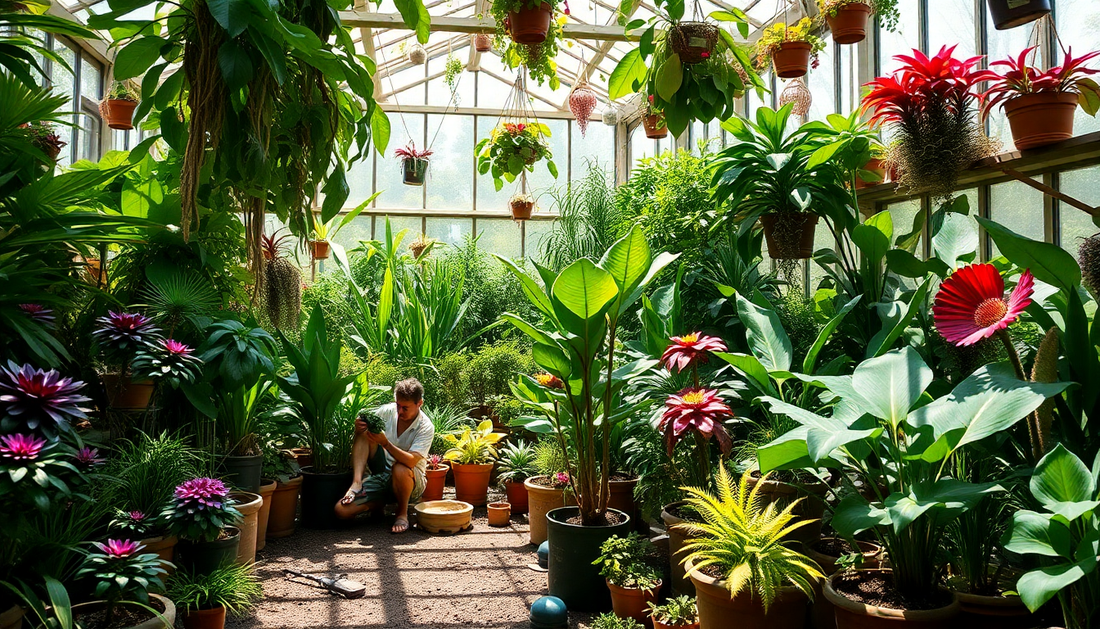
How Plants Get Their Essential Materials
The Magic of Photosynthesis: Harnessing the Sun's Power
One of the most miraculous processes that exist on our planet is the way plants produce their food, something scientists and nature enthusiasts alike marvel at. This amazing feat is accomplished through a process called photosynthesis. So how do plants go about this and how do they get the materials necessary to spark such an important life-sustaining reaction? Let's break it down in simple terms. Imagine the leaves as tiny solar panels ready to capture sunlight. These sophisticated green panels harness sunlight, which, along with water from the soil and carbon dioxide from the air, enables plants to produce their food. In essence, sunlight is converted into energy-rich compounds. This process not only sustains the plant but also generates oxygen, a vital byproduct that supports life on Earth. Without sunlight, none of these magical transformations would occur, underscoring its essential role within the plant life cycle.
The Critical Role of Soil and Nutrients
While sunlight is crucial, a plant's ability to thrive doesn't rely on it alone. Plants also require essential nutrients that they're able to procure from the soil. Think of soil as a nutritive grocery store stocked with minerals like nitrogen, phosphorus, and potassium—key nutrients that promote growth and play a part in everything from root development to flowering. These nutrients are often dissolved in water, which roots absorb and circulate to where they're needed most. Plants have an intricate root system that spreads out to maximize absorption efficiencies. Some plants even develop symbiotic relationships with microbes in the soil, such as mycorrhizal fungi, which help them assimilate these nutrients more effectively. All in all, the soil is a significant source of these vital materials, crucial for the plant's development and overall health.
Water: The Lifeblood of Plants
Water is another indispensable material that plants need. Much like how humans require water to function, plants utilize water for several reasons. It's a primary solvent that aids in the transport of nutrients from the soil to the various parts of the plant. Additionally, water plays a significant role in the process of photosynthesis, acting as both a reactant and a product. Through a process known as transpiration, plants release water vapor into the atmosphere, which helps in cooling the plant as well as maintaining the flow of minerals from soil to stem, also known as the transpiration stream. This continues even during the hottest days, maintaining the plant's homeostasis. Deprived of water, plants wilt because turgor pressure – the pressure of the cell contents against the cell wall, just isn't there to keep them upright.
The Importance of Carbon Dioxide
Now, let's talk about another uncelebrated hero in the plant world—carbon dioxide. Often vilified in the context of climate change, carbon dioxide is incredibly important for plants, serving as one of the substrates for photosynthesis. Air around us contains a minute concentration of carbon dioxide, but it's just enough for plants to survive and thrive. Leaves, chiefly through their stomata (tiny openings), take in carbon dioxide from the atmosphere. This carbon dioxide, reacting with water and utilizing sunlight, converts into glucose - the plant's food. Alongside providing energy, glucose helps in the synthesis of other essential materials.
Adaptations for Gathering Materials
Different plants have evolved various mechanisms to successfully gather the materials they need. Cacti, residing in arid environments, have developed shallow and widespread roots to swiftly soak up the essential periodic rains. Aquatic plants such as water lilies possess pliable structures, allowing them to thrive in waterlogged conditions while still reaching out for sunlight and anchoring themselves to the soil. Carnivorous plants like the Venus flytrap have adapted to nutrient-poor environments by evolving mechanisms to trap and digest insects, which serve as an alternative source of nutrients. These adaptations highlight the wondrous diversity of plant life and their resilience in facing the vast array of environmental conditions our planet offers. In essence, while plants' fundamental needs remain consistent, it is in their adaptations that we find an incredible variety of methods and strategies to ensure survival across differing ecosystems.
